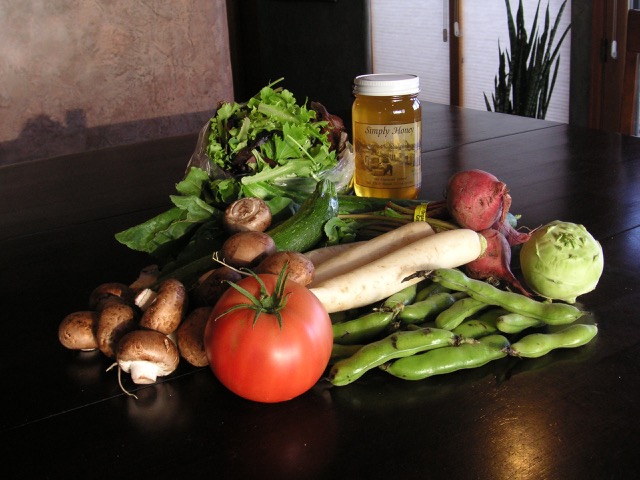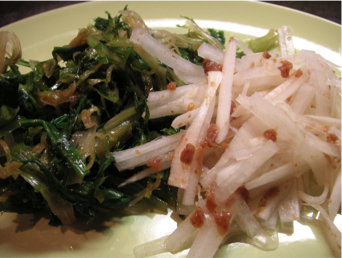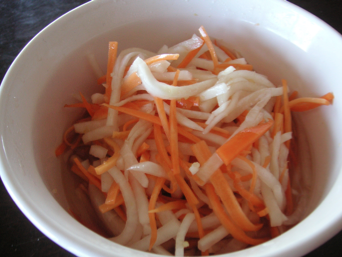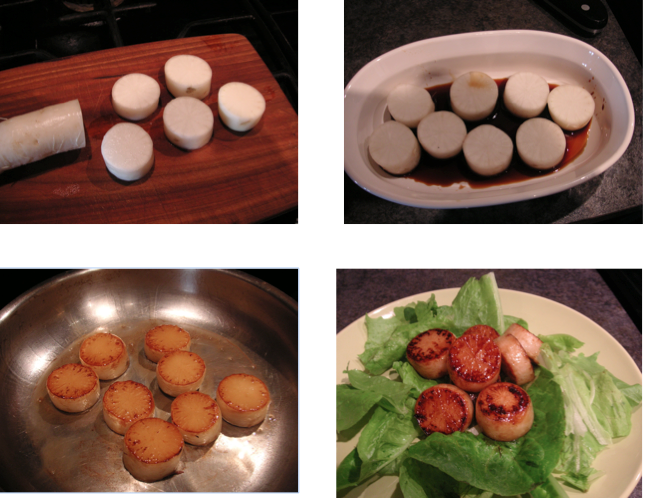|
“Shipping is a terrible thing to do to vegetables. They probably get jet-lagged, just like people.” -Elizabeth Berry  A new one this week that some folks may not be familiar with: kholrabi. Kholrabi is another member of the Brassica family (broccoli, kale, cabbage, brussel sprouts) that was selected for lateral meristem growth. The name comes from the Swiss-German khol "cabbage" and rabi "cabbage." Kholrabi's taste similar to broccoli and can be used in the a similar way. Also, the sweetness of our local honey farm graces this week's box with the fruit of insects and flowers. Oh my! NOTICE: we are looking for a CSA shareholder to help with the weekly newsletter/CSA blog, contact Nick if you are interested. Have a great week! Simply Honey: "Simply Honey is progressive natural honey company. We pride our self on managing our bees in a sustainable bee friendly manner. We pack all of our own honey and do not buy honey from other producers. We offer raw unheated honey, from the San Luis Valley, Northern and Southern New Mexico. We produce 4 different floral source honey's and beautiful white comb honey. Every crop is packed seperate and never blended. You will notice the year of the honey on every jar. Like a fine wine honey should be celebrated for its character." Pictured here is Simply Honey's Brent Edelen. Here's the box: Zuchinni, COG, Milliberger Farms, Pueblo 1 pound Crimini Mushrooms, Colorado Mushroom Farm, Alamosa 1 8 oz Mixed Greens, COG, Ring a Ding Farms, Howard 0.5 pound Fava Beans, COG, White Mountain 1 pound Daikon Radish, COG, WMF 1.33 pound Honey, Simply Honey, Alamosa 1 pint Tomatoes, Graber's Produce, Alamosa 1 pound Chioggia Beets, COG, WMF 1 bunch Cucumber, Ab Yoder Family Farm 1 cuke Kholrabi, WMF 1 kholrabi From Megumi's Kitchen: Daikon is a very versatile vegetable. It’s good raw, cooked, grilled… and can be dried and preserved for the winter. Also its leaves, as well as roots, are known for medicinal properties. Daikon might be somewhat of a newcomer to the American households, but it is a dependable regular in the Japanese kitchens. Julienned daikon is probably one of the most common ingredients (along with potatoes, onions, tofu, and wakame seaweed) for miso soup. Grated daikon is a must to accompany Tempura as it cuts the crease and helps the digestion. Pickled daikon, called takuwan often yellow-ish in color, is a consistent addition to the bento box. Daikon may not be used for the main dish often, but it is an award winning supporting act in many Asian cooking. Here are a few of my favorite easy Daikon recipes: —— Daikon “salad” with Umeboshi ——- Umeboshi si dried, pickled and fermented ume plums. (http://justhungry.com/homemade-umeboshi-japanese-pickled-plums) Check Asian food section of local grocery store for umeboshi in whole or paste form. It has strong salty and sour taste, perfect to dress julienned Daikon. And that’s all it takes to make the Daikon salad with umeboshi! :) —— Daikon & Carrot “salad” or Namasu This is a “must have” during the new year celebration in many Japanese household due to the carrot’s red and daikon’s white giving festive look.
daikon (julienned) equal amount of carrots (julienned) salt rice vinegar enough to cover the carrots and daikon sugar 1 dried red chili (whole, optional) Massage the julienned carrots and daikon with a few pinches of salt. In a small sauce pot, mix sugar and vinegar and heat until the sugar resolves. Add the red chili. Taste and add more sugar if desired. Place the carrot-daikon mix into a bowl. Pour the vinegar mix over. Mix well and let it sit in a refrigerator or a cool room over night. It is good for about a week. ——— Daikon “Steak” ——- Ok, ok… it’s not really a steak. But it is a rare occasion that daikon can take the center stage of a meal. Cross cut the daikon about 1/2 inch thick (you are getting “rounds”). Marinade the cut surfaces in soy sauce (or fish sauce) for about 10 minutes each. Sauté on both sides in a pan till it is tender and surfaces are nicely browned.
0 Comments
Leave a Reply. |
Archives
June 2024
Categories |





 RSS Feed
RSS Feed

